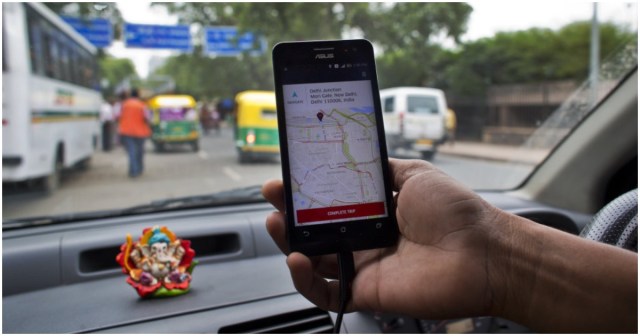Even until a decade ago, the economics of the cab industry were fairly simple. Drivers owned their cabs, and the fare they received from the passengers, after deducting fuel and maintenance expenses, became their income. The industry, though, has been turned on its head in recent times — middlemen such as Uber and Ola have taken over the space, and drivers no longer work only for themselves. And the resulting fare breakdown has become a lot more complex.

Uber’s detailed financial statements have been accessed by The Information, and they provide a glimpse into how the ride hailing giant earns and spends its billions. These results are for Uber’s entire global operations, but provide hints to where the money goes. Uber’s overall global gross revenues was $9.7 billion (Rs. 63,000 crore) in the third quarter of 2017 — this was the total money it received from customers across the world. We normalize this gross revenue to figure out how Uber spends Rs. 100 it receives from a hypothetical ride.
Ride Cost: Rs. 100
Lets assume you’ve taken a ride worth Rs. 100 on Uber. You’ve paid the money through the app, and you’re off on your merry way.
Driver income: Rs. 68.12
While you’ve paid Rs. 100 to Uber, the driver receives only Rs. 68.12. Uber pockets the remaining money — Rs. 32 — as a commission for connecting you to the driver.
Driver bonuses: Rs. 3.99
But drivers don’t only receive the money from each ride. They also receive incentives from Uber for completing a set number of rides. This income averages out to Rs. 3.99 per ride for the driver. The driver, thus, makes roughly Rs. 68.12+Rs. 3.99 = Rs. 72 for a ride that cost you Rs. 100.
Rider promotions: Rs. 4.65
Uber often discounts its fares through promotions and offers. These discounts, at an overall level, cost Uber an average of Rs. 4.65 per Rs. 100 ride.
Refunds: Rs. 0.19
Rides often don’t go the way passengers intend, and Uber seems to refund quite a few of its them. On average, Uber’s refunds cost it 20 paise per ride.
Taxes: Rs. 3.34
This is the big one — while tax rates vary across countries, Uber, on average, pays Rs. 3.34 on taxes to governments.
Insurance: Rs. 9.94
Uber might not own its cars, but its income statement shows a considerable spend on insurance — for a ride of Rs. 100, Uber spends nearly Rs. 10 on insurance.
At this point, Uber is left with: Rs. 10.56
You’d think that with all these deductions, Uber would be barely left with anything, but the company seems to do okay. Even after paying its drivers through income and incentives, spending money on offers, and paying taxes and insurance, Uber is still left with Rs. 10.56 per ride for which the customer paid Rs. 100.
But Uber’s expenses don’t end there.
Operations and Support: Rs. 3.81
Uber operates in over 500 cities across the world, and it must have teams on the ground that support its operations, on-board drivers, and provide customer service. On average, this costs Rs. 3.81 per ride in which a customer pays Rs. 100.
Sales and Marketing: Rs. 5.89
Uber’s now 8 years old, but it still spends money promoting its operations to its customers. Marketing can be through hoardings, social media, and ads in newspapers, and sales costs can include the partnerships it signs. These costs add up to Rs. 5.89 per ride for which a customer pays Rs. 100.
Research and Development: Rs. 3.23
Uber doesn’t only run its taxi business — it also has cutting-edge programs through which it’s trying to develop self-driving cars, and even flying taxis. These projects cost Uber Rs. 3.23 for a ride that costs you Rs. 100.
General and Administrative: Rs. 3.86
Uber also spends money on General and Administrative costs. These could be costs related to HR, the renting of its offices, even its legal expenses. For a ride that costs you Rs. 100, Uber spends roughly Rs. 3.86 on such expenses.
Uber is left with: – Rs. 7.65
This time, Uber’s final income doesn’t look so pretty. After deducting operations costs, sales and marketing, R&D and general costs and even deprecition, Uber loses Rs. 7.65 a ride that costs you Rs. 100. While Rs. 7.65 doesn’t seem like much, when added over all of Uber’s rides across the world, Uber’s losses were Rs. 4,800 in the third quarter of 2017. Its annual losses were Rs. 18,150 crore in 2017.